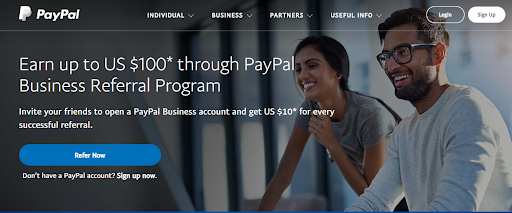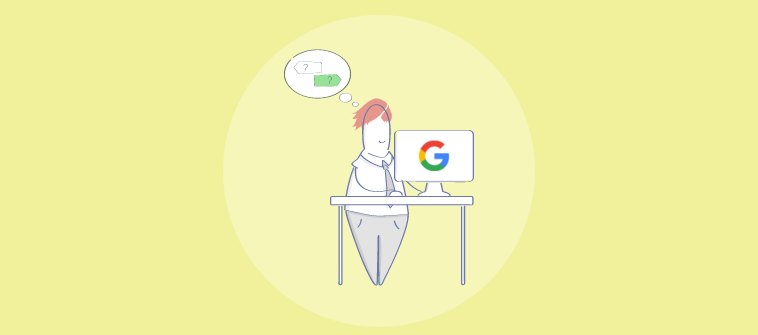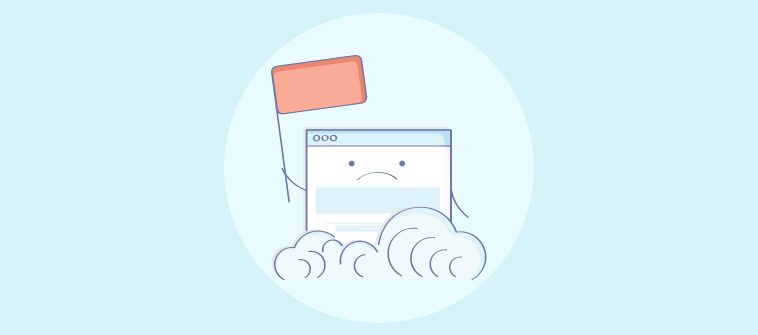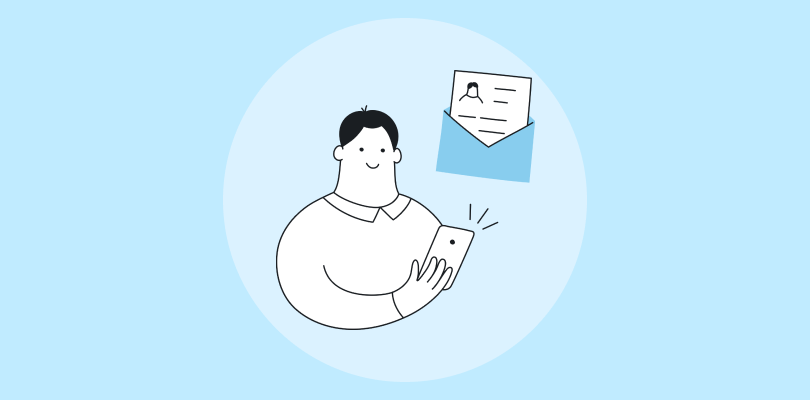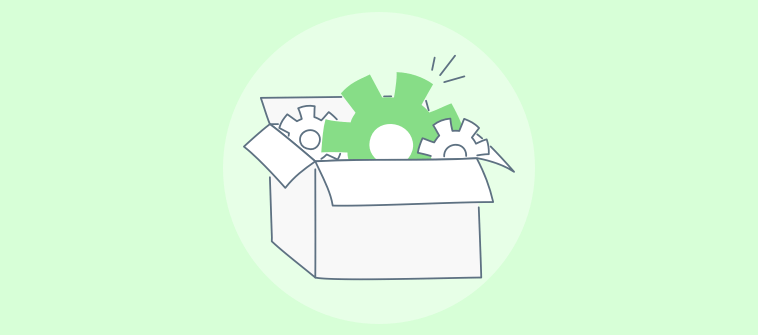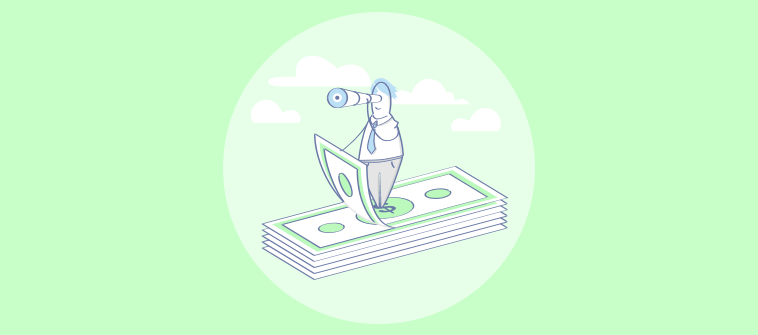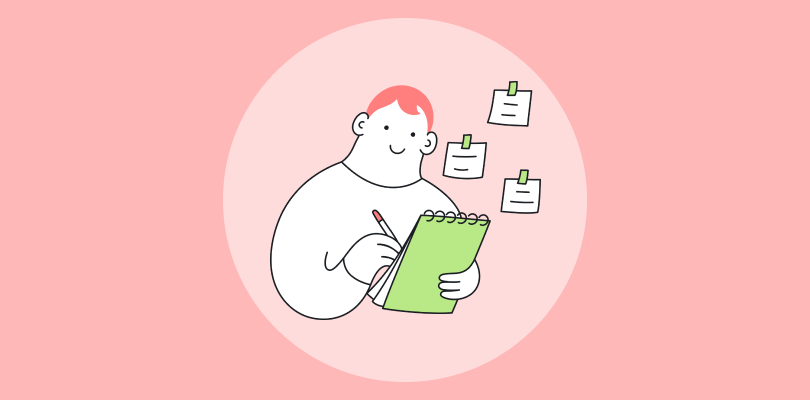Do you know what corporate mega-giants like Microsoft, Adobe, and Google have in common?
Besides being worth billions of dollars, they all operate on the same ‘software as a service’ (SaaS) model.
However, surprisingly enough, not every SaaS company has been able to hit the jackpot. The reason? An alarming customer churn rate.
If your SaaS business is tired of losing customers and wishes to retain them for a lifetime, this blog is for you. We’ll explore the types of churn, its impact, and actionable strategies to reduce it, helping you build a loyal and engaged customer base.
What Is SaaS Customer Churn?
SaaS customer churn refers to the percentage of customers who cancel their subscriptions or stop using a SaaS product over a specific period. This metric is a key indicator of business health, as high churn rates can signal issues such as dissatisfaction, poor onboarding, or lack of product fit.
Managing churn is critical for SaaS companies because retaining existing customers is often more cost-effective than acquiring new ones. By understanding why customers leave—whether due to unmet expectations, better alternatives, or external factors—businesses can implement strategies like improving customer success, enhancing product features, etc., to minimize churn.
Why Is Customer Churn the Most Important SaaS Metric?
Customer churn is a critical metric for SaaS businesses because it directly impacts revenue, growth, and long-term sustainability. Here are four reasons why it is considered the most important:
- Impacts Recurring Revenue: Churn directly reduces Monthly Recurring Revenue (MRR) and Annual Recurring Revenue (ARR). Retaining customers ensures steady cash flow, which is essential for scaling and covering operational costs.
- Reflects Customer Satisfaction: A high churn rate for SaaS often indicates dissatisfaction with the product, service, or value proposition. Monitoring churn helps identify areas where the customer experience can be improved to boost retention.
- Affects Customer Lifetime Value (CLTV): Customer churn limits the potential lifetime value of customers. Lower churn means higher CLTV, maximizing the return on customer acquisition costs and increasing profitability.
- Hinders Growth Potential: For SaaS businesses, growth depends not only on acquiring new customers but also on retaining existing ones. High churn forces companies to invest more in customer acquisition just to maintain the status quo, reducing growth efficiency.
How to Calculate SaaS Churn Rate
Reducing churn can be an ongoing struggle, and it will continue for as long as your company exists. But that doesn’t mean you give up the fight.
In this section, we will learn how to calculate churn rate for SaaS.
Churn Rate = (Number of Customers Lost During a Period/ Total Customers at the Start of the Period)×100
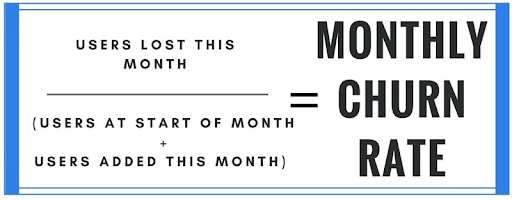
Example:
Let’s assume your SaaS business has 500 active users at the beginning of a month. Now, towards the end of the month, the number of users is reduced to 450 (due to reasons like high pricing, better competitor products, etc).
Applying the above formula, the churn rate is:
50/50 x 100 = 10%
What Is the Average Churn Rate by Industry: Saas, Retail, Healthcare & More
Churn rates vary widely across industries due to differences in customer behavior, product value, and switching costs.
While the average SaaS churn rate is typically lower due to recurring revenue models and high customer retention efforts; on the other hand, industries like retail and media experience higher churn due to lower switching barriers and diverse alternatives. Here’s an overview:
| Industry | Average Churn Rate | Description |
|---|---|---|
| SaaS (B2B) | 5-10% annually | Lower churn due to long-term contracts, higher switching costs, and customer success focus. |
| SaaS (B2C) | 20-40% annually | Higher churn driven by flexible monthly plans and lower customer commitment. |
| Retail | 20-25% annually | High churn due to seasonal purchasing patterns and low switching costs. |
| Healthcare | 5-7% annually | Low churn due to critical services and long-term patient-provider relationships. |
| Telecommunications | 15-20% annually | Moderate churn due to contract lock-ins but influenced by competitive offerings. |
| Media/Streaming | 30-40% annually | High churn driven by monthly subscriptions and customers seeking content variety. |
| E-commerce | 25-30% annually | Churn is common due to price sensitivity and competitive alternatives. |
| Financial Services | 5-8% annually | Low churn due to trust-based relationships and high switching costs. |
Note: These rates are averages and may vary by company size, region, and specific market dynamics. Businesses should benchmark their churn rates against industry standards to gauge performance effectively.
What Is a “Good” Churn Rate for SaaS?
In the SaaS industry, a good churn rate is considered 3% or below. Again, your churn rate depends on the type of industry you cater to and can differ for different products.
Monthly Churn Rate vs. Annual Churn Rate
The monthly and annual churn rates are two ways to measure customer attrition in SaaS or subscription-based businesses. While both track the percentage of customers lost, they differ in time frame and significance.
1. Monthly Churn Rate:
- Definition: The percentage of customers who cancel their subscriptions within a month.
- Use Case: Provides a quick snapshot of customer retention trends and is ideal for identifying short-term issues in customer experience or onboarding.
- Example: If 50 out of 1,000 customers leave in a month, the churn rate is 5%.
2. Annual Churn Rate
- Definition: The percentage of customers who cancel their subscriptions within a year.
- Use Case: Offers a broader view of customer retention, helping businesses assess long-term success and the effectiveness of loyalty strategies.
- Example: If 120 out of 1,000 customers leave over a year, the churn rate is 12%.
What Are the Leading Causes of SaaS Customer Churn?
There is no better way to understand churn than looking at the leading causes of it. Here are the top 4 reasons why most SaaS customers churn.
1. Bad Onboarding Experience
Customers start using the product before getting familiar with the various features
Customers pay for a SaaS product as it helps them solve a problem, whether it’s about managing their ongoing projects or simply tracking customer support tickets. If they are unable to solve their problems due to a bad onboarding experience, you are going to see churn.
Every customer that uses your product must be well-versed with all the features, how the product can solve his/her problem, and whom to contact in case of an issue.
2. Lack of In-Demand Features
Customer demands a feature that your product doesn’t offer
The competition in the SaaS market is stiff more than ever and as a result, every company is on a spree to launch product updates. If your competitors are offering more features at the same price or at a slightly higher price, you will see customers switch.
If you notice that a large number of subscribers have repeatedly asked for the same feature, you may want to rework your product feature list and ask your developers to include the in-demand features.
3. Unreliable Support
Customers face difficulties in finding the right solutions to their problems
Modern customers want reliable support. When something goes wrong with your SaaS product, and it isn’t sorted to the customer’s satisfaction, they are more likely to leave your business.
According to a Microsoft report, 56% of people around the world have stopped doing business with a company because of poor customer support experiences.
This can have a double negative impact on your business as those leaving due to a bad support experience will tell others, creating a negative brand perception. Therefore, It becomes important for your business to offer 24×7 reliable support on channels that customers prefer the most.
4. High Pricing
Customers feel they are being overcharged by your business
Pricing is one of the most common adjustments that SaaS companies make when they are consistently losing customers. There are hundreds of software review platforms on the internet today. This means that the ‘right price’ for a product is just a click away. So, don’t be surprised if your customers have a better understanding of the pricing of your competitors’ products than you.
Arriving at a competitive price will require thorough competitor analysis, a better understanding of your margins and cash flow, and the perceived value of your SaaS product in the market.
10 Clever Strategies to Stop Churn Right Now!
Has customer churn always presented itself as a big challenge for your growing business? Well, it should not anymore. We have curated a comprehensive list of 10 clever strategies to prevent churn at the earliest.
#1. Nail the First Impression With Great Onboarding
The good news is that customers already like your SaaS product, and that’s why they chose to buy from your brand. Now, it’s your job to “not” make them regret this decision.
A positive onboarding experience makes your customers realize that they made the right choice and helps your business in retaining them for longer periods.
Here are some tips for a kick-ass onboarding process:
- Effectively demonstrate your product’s core features and highlight how they can solve your customer’s problems.
- Keep your onboarding tours as simple as possible. Offering extra or unnecessary details to customers even before they are ready can leave them scratching their heads.
- In addition to in-app tutorials and guides, continue using email throughout the onboarding process. Emails act as reminders and can be used to educate customers from time to time.
- If your customers get stuck with something or have doubts, resolve them at the earliest. You can even dedicate a phone number or a specific email address to assist your new customers.
#2. Engage & Inspire Your Customers
As a SaaS business, you probably have annual or monthly subscribers and if you want them to continue using your product, you need to keep them engaged. Period.
To engage and re-engage with your users, you must use every opportunity to personalize.
Every customer might be solving a unique problem using your product. Simply share relevant and personalized content over email or on social media and tag them. Besides this, ensure your customers actively participate in sharing their feedback.
Don’t be afraid to get creative with your customer engagement strategies on social media. For example, by employing user-generated content strategies to promote your brand or even by partnering with prominent influencers in your niche. Your customers will appreciate your innovation and the extra effort you put into finding new ways to connect with them.
Here is an example of how MailChimp is always engaging and inspiring users on social media. MailChimp started the ‘Small Business Saturday’ campaign to empower the thousands of small businesses that use its product. MailChimp created personalized, custom GIFs for their employees, which they used during the campaign to respond on social media.
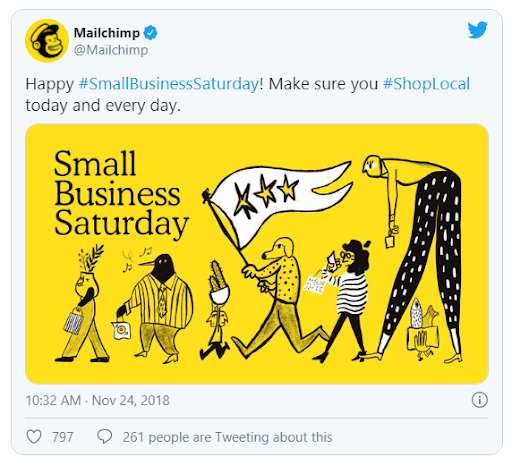
#3. Be Willing to Offer More
To retain your paying customers for a long period, consider offering more value. Now, when most SaaS companies think of a giveaway, they think, “we are already offering a 30-day free trial and our customers love it.”
15-day or 30-day trials are not enough anymore and have become mainstream in the SaaS industry. You need to make an offer that is connected to your service and creates a win-win situation for everyone.
Be willing to share the fruits of your labor with your beloved customers.
For instance, to promote its business, PayPal awards $10 for each successful referral. Who does not like a bit of extra cash just for sharing a link? As a result, PayPal has witnessed huge growth and has successfully onboarded millions of merchants through its business referral program.
#4. Measure the Right SaaS Metrics
There are several metrics that can help you measure the overall health of your business at regular intervals. However, with a metric for almost everything, it becomes difficult to choose the right ones.
Here are certain metrics other than churn rate, that will help you re-examine your business strategies and improve performance.
- Cost of Customer Acquisition
You need to keep an account of how much it costs your business to acquire a new customer. As a growing SaaS business, you must focus on keeping the cost to a minimal value, so that the saved capital can be invested in product development and marketing.
Having the right image is essential for customer acquisition. If people don’t see your brand the right way, you’ll never get them interested enough to actually become eligible for acquisition. SaaS branding is often overlooked because of the kind of work SaaS companies do. They feel it’s not important or necessary, but that couldn’t be further from the truth. Any company, no matter how it’s run or what services it offers, has a brand that has to be good enough for potential customers. Remember your brand when planning your SaaS customer acquisition strategy.
- Average Revenue Per Customer
Every business should be well aware of the return they gained from their investments. Now, average revenue is a metric that will keep your sales and marketing teams on their toes. They can come up with better plans or build strategies to up-sell products and increase revenue.
- Customer Lifetime Value
Customer lifetime value refers to the total worth of a customer expanding over their complete relationship with your brand. By calculating the customer lifetime value, you can understand the potential worth of every customer and get to predict your future revenues.
#5. Support & Educate Users With Relevant Content
Content isn’t just a marketing tool anymore. With the right content, you can educate your users to reap the maximum benefits of your SaaS products.
Quality content can be a great differentiator in a crowded marketplace.
You can offer free training sessions, self-help articles, video tutorials, or product guides to allow customers to have a seamless onboarding and implementation experience. You must commit to consistent and, most of all, quality publishing.
For instance, ProProfs Help Desk has hit that sweet spot when it comes to supporting its users with relevant content. Besides its 24×7 awesome human support, the SaaS company equips every user with self-help articles, FAQs, videos, blogs, and a lot more. Creating and sharing the best-in-class content has made ProProfs come across as a reliable business that is eager to support its customers at every stage of interaction.
#6. Offer a ‘Freemium’ Plan
Customers love free stuff, and offering your product for free can be a great way to get user attention and woo customers.
When all the great things in life are free, why should your product cost a fortune?
However, offering your product for free does not mean you never charge your customers. You can introduce a forever free plan that offers basic features and a much-needed sneak peek into what your product holds. Once, customers have used your free product and like it, they are much more likely to convert to paying customers.
For instance, Evernote was experiencing a lot of challenges during the early stages of its business. However, by introducing its product for free, it was able to make potential users understand the value of its product and grow its user base.
#7. Focus on At-Risk Customers
If you take a close look at your current customer base, there are some customers who are more likely to leave your business compared to others. This fraction is called at-risk customers and deserves your undivided attention.
You need to identify your top customers at risk and reach out to them to figure out the reasons leading to their abrupt behavior. Some telltale signs can be customers who are not regular with their subscriptions or customers who have looked to opt for a lower-priced plan.
Sharing regular NPS (Net Promoter Score) surveys is a great way to identify such customers. You can understand how likely they are to remain loyal to your business.
It is important to note that no product is a great fit for all customers or industries. Encourage your marketing team to avoid pitching to those who aren’t a good fit for your SaaS product. This is a great strategy to reduce SaaS churn in the future.
#8. Understand Why Customers Churn
SaaS churn reasons can be plenty, however, you need to find out why your customers decide to leave. You must patiently attempt to understand what made them put an end to a relationship that started on a high note.
Directly communicating with your customers can be the key here.
When your customers hit the unsubscribe button, you can directly call them, and allow them to tell you what exactly went wrong. This is a great way to show your business genuinely cares and values their association with your brand.
Now, different customers can churn for different reasons. While some might find your competitor’s offer more lucrative, others might fail to see the scalability in your SaaS tool.
With the help of exit surveys, shared over email, text message, or social media, you can understand the leading causes of SaaS churn for your product and how you can prevent them in the future.
#9. Don’t Take Customer Service Lightly
Customer service is no longer just perceived as a department to assist customers. In reality, customer service reps are known to deliver some of the best experiences that a customer has with a brand.
But what happens when customer service goes wrong?
Globally, businesses lose vasts amounts of money due to poor customer service and SaaS businesses are no exception. According to Forbes, businesses across the globe lose $75 Billion due to poor customer service.
Irrespective of the channel a customer chooses to contact you, you must tackle their concerns as and when they come. You can leverage help desk software to keep a firm track of every issue and respond to customers in real-time.
#10. Offer Incentives on Long-Term Subscriptions
SaaS companies usually offer a range of subscription plans that can be bought by customers on a monthly, quarterly, or annual basis.
To encourage customers to stick with your brand for a long period of time, you must offer incentives to those who opt for long-term subscriptions.
For instance, you can offer special discounts or offers to those customers who buy a plan for 6 months or more. Ensure the benefits are offered to the customer at the earliest, otherwise, it can make them change their decision. If you are offering a 15% discount, make sure the discount is offered when the customer prepares for checkout.
Providing incentives to your loyal customers is a great way to enhance the customer lifetime value (CLV), generate higher revenues, and most importantly reduce saas churn rate.
How SaaS Company Size Impacts Your Average Churn Rate
The size of a SaaS company significantly impacts its average churn rate due to differences in customer base, product complexity, and resource allocation.
Small and early-stage SaaS companies often experience higher churn rates, as they typically cater to smaller businesses or individual users who may switch providers more frequently. Limited customer success resources and less mature products can also lead to a higher likelihood of customer dissatisfaction or disengagement.
In contrast, larger SaaS companies often enjoy lower churn rates due to their established reputations, advanced customer success strategies, and enterprise-grade offerings. These businesses cater to larger clients with long-term contracts, making switching more challenging. However, they may still face challenges in retaining smaller accounts or managing churn due to shifting market dynamics.
What Are the Types of Churn in SaaS?
In SaaS, there are multiple churn types which help identify root causes and optimize retention strategies. Let’s learn more about them.
1. Customer Churn
- Definition: When customers stop using or cancel their subscription to your product.
- Voluntary Churn: Customers cancel intentionally, often due to dissatisfaction, lack of perceived value, or better alternatives.
- Involuntary Churn: Cancellations caused by factors like payment failures, expired credit cards, or other unintentional issues.
2. Revenue Churn
- Definition: The loss of recurring revenue due to customer downgrades, cancellations, or account closures.
- Gross Revenue Churn: Revenue lost solely due to cancellations or downgrades, without considering any gains from upsells.
- Net Revenue Churn: Adjusted for revenue gains from upsells or expansions, providing a clearer picture of overall revenue health.
3. Product Churn
- Definition: When users stop engaging with the product, even if they haven’t yet canceled their subscription.
- Often a precursor to customer churn, caused by poor onboarding, lack of features, or unmet needs.
- May indicate that users are not realizing the product’s full value or are facing usability issues.
4. Market-Driven Churn
- Definition: Churn caused by external factors outside the company’s control.
- This type of SaaS churn can happen due to mergers, acquisitions, or customers going out of business.
- Requires robust risk management strategies.
B2B SaaS Churn Rates vs. B2C SaaS Churn Rates
The churn rates for B2B (Business-to-Business) and B2C (Business-to-Consumer) SaaS companies typically differ due to their distinct customer bases, purchase processes, and usage patterns. Here’s a small table highlighting the differences:
Key Differences:
| Aspect | B2B SaaS | B2C SaaS |
|---|---|---|
| Churn Rates | 5-10% annually | 20-40% annually |
| Customer Base | Businesses, teams | Individual consumers |
| Contract Terms | Annual/Multi-year | Monthly/Flexible |
| Switching Costs | High (complex processes) | Low (easy alternatives) |
| Retention Efforts | Proactive (Customer Success) | Reactive (discounts, promotions) |
Now here is a detailed comparison:
1. B2B SaaS Churn Rates
Lower Churn Rates: B2B SaaS companies often experience churn rates between 5% to 10% annually, depending on the industry and customer segment.
Reasons for Lower Churn:
- Longer Sales Cycles: B2B customers often have extensive evaluation processes, ensuring better alignment with the product.
- Higher Switching Costs: Integrating a new solution can be complex and expensive for businesses, discouraging frequent changes.
- Contracts: Many B2B SaaS companies operate on annual or multi-year contracts, reducing the likelihood of churn.
- Focus on Customer Success: B2B SaaS companies invest heavily in customer success teams to ensure ongoing satisfaction and retention.
2. B2C SaaS Churn Rates
Higher Churn Rates: B2C SaaS churn rates typically range from 20% to 40% annually, with monthly churn rates often between 2% to 8%.
Reasons for Higher Churn:
- Lower Switching Costs: Consumers can easily switch to alternatives, as setup and integrations are minimal.
- Price Sensitivity: Individual consumers are more likely to cancel subscriptions during economic downturns or when costs outweigh perceived value.
- Lack of Personalization: B2C SaaS offerings are generally less tailored, which may not retain customers seeking unique features or experiences.
- Trial Users: B2C SaaS often has a high volume of trial or freemium users who do not convert or retain after a short period.
What Is Negative SaaS Churn?
Negative SaaS churn occurs when the revenue gained from existing customers (through upgrades, upselling, or cross-selling) exceeds the revenue lost due to customer cancellations or downgrades. Essentially, even if some customers leave, the company still grows its overall recurring revenue from the remaining customer base.
This is a highly desirable scenario for SaaS businesses as it indicates strong customer satisfaction and engagement, with users willing to invest more in the product. Strategies like tiered pricing, offering add-ons, or introducing premium features can drive negative churn, helping businesses scale without relying solely on new customer acquisition.
Reduce Churn Rate & Grow Your SaaS Business Today!
While churn is inevitable, your business can still make small changes that can have a huge impact on the overall health of your business. Besides ensuring a smooth onboarding experience and engaging your users, you must look to offer 24/7 reliable customer support.
You can leverage a tool like ProProfs Help Desk to stay on top of every customer communication. Features like shared inbox, AI response suggestions, ticket tracking, smart reports, etc., can help your business retain more customers through delightful support.
Now that we’ve understood different types of customer complaints and how to handle them like a pro, let’s take a look at some of the frequently asked questions below
SaaS Churn Rate: FAQs
At what stage should SaaS companies be alarmed by their churn rate?
SaaS companies should be alarmed if churn exceeds industry benchmarks (5-10% annually for B2B SaaS) or if churn trends upward for consecutive months. High churn during the scaling stage can severely hinder growth and long-term sustainability.
How do contract lengths affect retention rate?
Longer contract lengths improve retention rates by locking customers in for extended periods, reducing the frequency of renewal decisions. On the other hand. shorter contracts, like monthly plans, often result in higher churn due to easier switching.
How a low churn rate positively impacts SaaS churn metrics like—MRR, CLV & Customer Retention Rate
A low churn rate boosts MRR by retaining more customers and enhances CLV by maximizing the revenue earned per customer. It also strengthens customer retention rate, building loyalty and fostering long-term relationships that drive growth.

